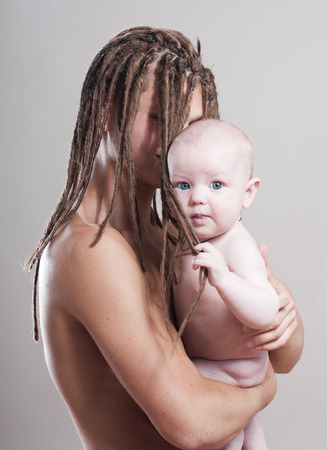1. Water Temperature Control
Keeping your baby safe during bath time starts with controlling the water temperature. Babies have delicate skin that can burn much more easily than adults, so it’s essential to ensure the water is at a safe and comfortable level.
Set Your Water Heater to a Safe Temperature
To prevent accidental burns, set your water heater to 120°F (49°C). This helps ensure that the water coming out of the faucet is not too hot for your baby.
Why 120°F (49°C)?
| Temperature | Time to Cause a Burn |
|---|---|
| 140°F (60°C) | Less than 5 seconds |
| 130°F (54°C) | About 30 seconds |
| 120°F (49°C) | Safe for babies |
Always Test the Bathwater First
Before placing your baby in the tub, always test the water temperature with your wrist or elbow. These areas are more sensitive than your hands and can better detect if the water is too hot or too cold.
How to Check Bathwater Temperature
- Use a bath thermometer: This gives you an accurate reading of the water temperature.
- Feel with your wrist or elbow: If it feels warm but not hot, its likely safe for your baby.
- Swirl the water: This helps even out any hot spots before placing your baby in the tub.
Additional Safety Tips
Besides controlling the temperature, here are some extra precautions to keep bath time safe:
- Turn on cold water first: When filling the tub, start with cold water and then add warm to prevent sudden hot bursts.
- Never leave your baby unattended: Even for a second, always keep an eye on your little one while they’re in the bath.
- Avoid deep water: Fill the tub with just a few inches of water—enough to cover their legs but not too deep.
By following these steps, you can create a safer environment and make bath time enjoyable for both you and your baby.
2. Slip Prevention
Slippery surfaces in the bathroom can be dangerous for babies and toddlers. Since little ones are still developing their balance and coordination, even a small slip can lead to injury. Taking precautions to prevent falls is essential.
Use Non-Slip Mats
One of the easiest ways to reduce the risk of slipping is by placing non-slip mats both inside and outside the bathtub. These mats provide extra grip, making it safer for your baby during bath time.
Keep the Bathroom Floor Dry
Water spills are common in the bathroom, especially during baths. Always wipe up any splashes or puddles immediately to keep the floor dry and safe for your baby.
Additional Slip Prevention Tips
| Tip | Description |
|---|---|
| Install Grab Bars | Add grab bars near the bathtub and toilet to provide extra support for caregivers and toddlers who may need assistance. |
| Avoid Slippery Rugs | If you use rugs in the bathroom, ensure they have a non-slip backing to prevent them from sliding on the floor. |
| Use Soft Bath Kneelers | A cushioned kneeler can help parents stay stable while bathing their baby, reducing the chances of slipping. |
| Dress Your Baby in Grip Socks | If your little one walks around the bathroom, let them wear socks with rubber grips to improve traction on smooth surfaces. |
Create a Safe Routine
Makes sure bath time follows a routine where safety is always a priority. Have towels ready before starting, avoid distractions, and always supervise your baby closely to prevent accidents.

3. Safe Storage of Bath Products
Keeping your baby safe in the bathroom means making sure all bath products are stored securely. Many shampoos, soaps, and lotions contain ingredients that can be harmful if swallowed or get into your little ones eyes. Proper storage helps prevent accidental ingestion and spills that could cause slips and falls.
Keep Toiletries Out of Reach
Babies and toddlers are naturally curious, and they love to grab whatever they can reach. To keep them safe:
- Store shampoos, conditioners, soaps, and lotions on high shelves where little hands cant access them.
- Avoid leaving bottles on the edge of the bathtub or sink.
- Use pump dispensers instead of open-top containers to minimize spills.
Use Childproof Locks on Cabinets
If you store bath products in cabinets or drawers, install childproof locks to prevent access. Here are some types of childproof locks you can use:
| Lock Type | Description |
|---|---|
| Cord Locks | Ideal for cabinets with handles; requires twisting to open. |
| Magnetic Locks | A hidden latch inside the cabinet; opens only with a magnetic key. |
| Latch Locks | A simple mechanism that prevents doors from being pulled open. |
| Adhesive Locks | No drilling required; sticks onto cabinets for easy installation. |
Avoid Storing Hazardous Items in the Bathroom
The bathroom is not just home to bath products—many households also store cleaning supplies and medications there. Keep these items locked away in a separate area outside the bathroom whenever possible. If they must be stored in the bathroom:
- Use locked medicine cabinets for prescription and over-the-counter medications.
- Avoid keeping household cleaners under the sink unless secured with a lock.
- Add clear labels to all bottles so you can quickly identify their contents.
Create a Routine for Checking Safety
Babies grow fast, and what was once out of reach may soon become accessible. Regularly check your storage setup and adjust as needed. A good habit is to do a quick safety check every time you clean the bathroom—ensuring everything is securely stored before you leave.
4. Toilet and Bathtub Safety
Keeping your baby safe in the bathroom means paying close attention to potential hazards, especially around the toilet and bathtub. Babies are naturally curious, and water-related accidents can happen in just seconds. Here’s how you can create a safer environment for your little one.
Install Toilet Locks
Toilets might not seem dangerous, but they pose a serious drowning risk for babies and toddlers. Since young children have a heavy head-to-body ratio, they can easily fall in and struggle to lift themselves out. Installing a toilet lock is an easy way to prevent accidents.
Benefits of Toilet Locks:
- Prevents accidental falls into the toilet
- Keeps babies from playing with unsanitary water
- Helps avoid plumbing issues caused by dropped toys or objects
Never Leave Your Baby Unattended in the Bathtub
No matter how short the time, never leave your baby alone in the bathtub—not even for a second. Babies can drown in as little as an inch of water, so constant supervision is critical.
Bathtub Safety Tips:
| Safety Measure | Description |
|---|---|
| Always stay within arms reach | Avoid distractions like phones or doorbells when your baby is in the tub. |
| Use a non-slip mat | This helps prevent slipping and injuries inside the bathtub. |
| Keep water temperature safe | Aim for warm water (around 100°F or 37°C) to prevent burns. |
| Drain the tub immediately | Once bath time is over, empty the tub to remove any drowning hazard. |
Create a Safe Bathing Routine
Establishing safe habits early on can make bath time both fun and secure for your baby. Always gather everything you need—towels, soap, shampoo—before starting bath time so you never have to step away. Consider using a baby bathtub designed for extra support until your child is old enough to sit safely on their own.
5. Electrical and Sharp Object Safety
The bathroom is filled with potential hazards, especially when it comes to electrical appliances and sharp objects. Babies are naturally curious, and it’s essential to take extra precautions to keep them safe.
Keep Electric Appliances Away from Water Sources
Water and electricity are a dangerous combination. To prevent accidents, follow these safety tips:
| Appliance | Safe Storage Tips |
|---|---|
| Hair Dryers & Curling Irons | Unplug after use and store in a locked cabinet. |
| Electric Razors | Keep away from sinks and bathtubs; store in a dry place. |
| Nightlights & Heaters | Avoid placing near water sources or within baby’s reach. |
Store Razors, Scissors, and Other Sharp Objects Securely
Babies love to explore, so make sure all sharp items are safely stored away:
- Razors: Keep them in locked cabinets or high shelves out of reach.
- Nail Scissors & Tweezers: Store in child-proof containers.
- Bobby Pins & Small Sharp Accessories: Avoid leaving them on countertops where babies can grab them.
Use Childproof Locks for Extra Protection
If your bathroom has drawers or cabinets that contain hazardous items, install childproof locks to prevent access. This simple step can significantly reduce the risk of injuries.
Avoid Leaving Sharp Objects Unattended
No matter how busy things get, always put sharp objects away immediately after use. Even a few seconds of distraction can lead to accidents.
Taking these precautions will help create a safer bathroom environment for your little one. A little extra effort now can prevent serious injuries later!


